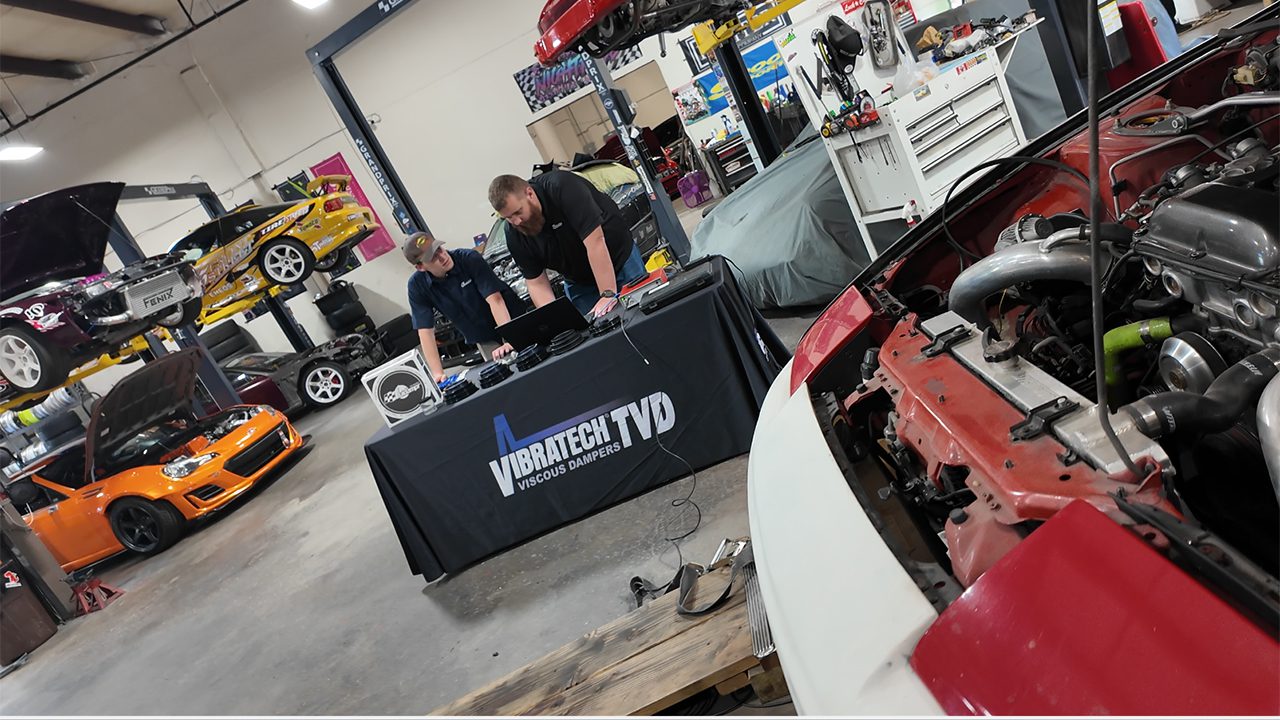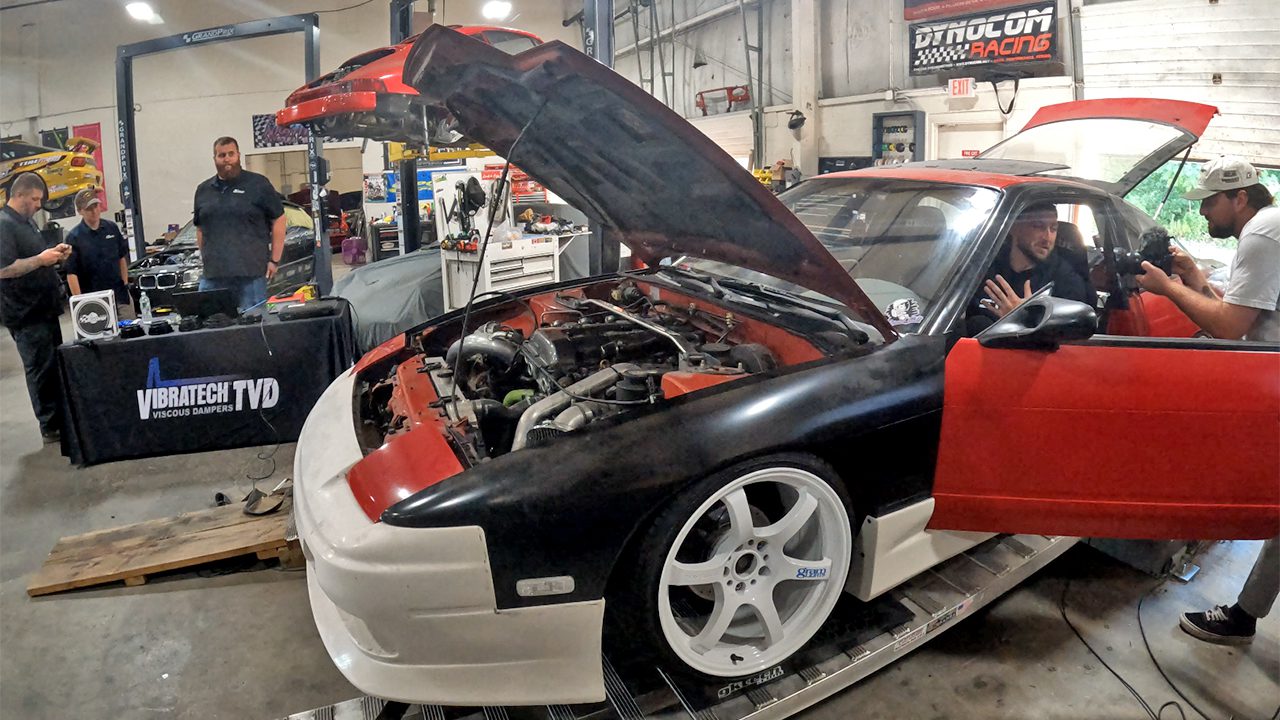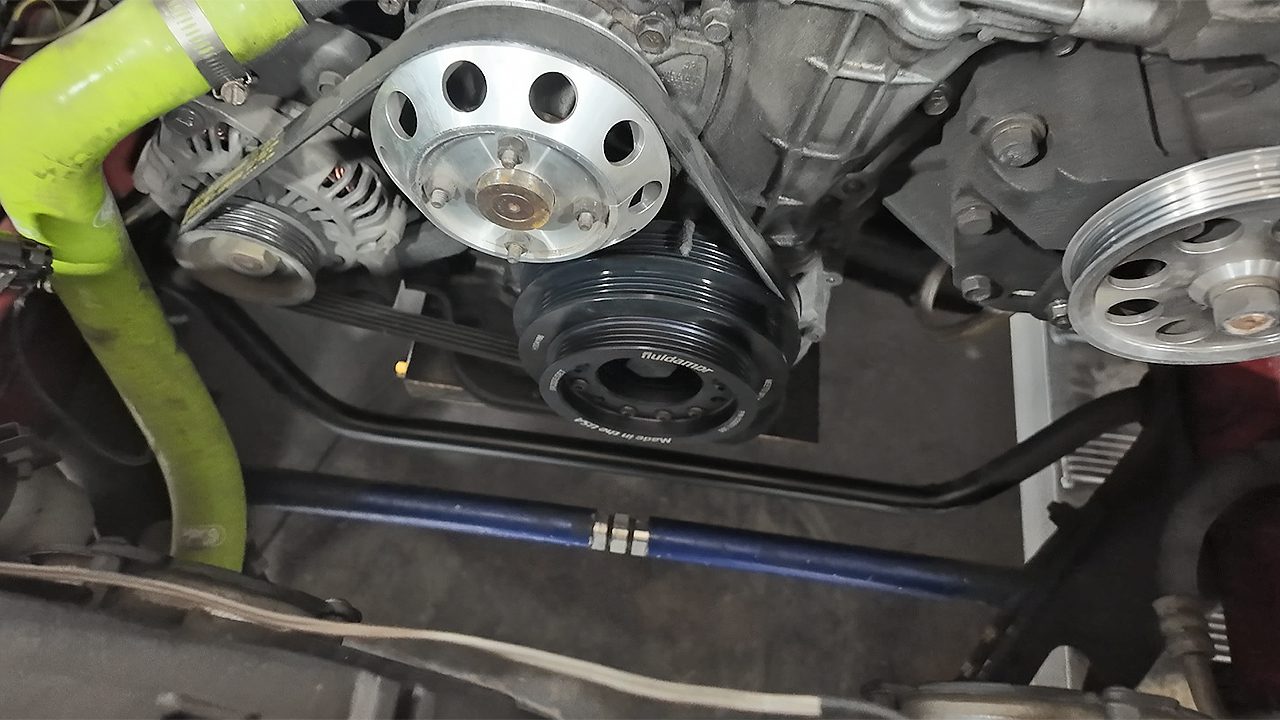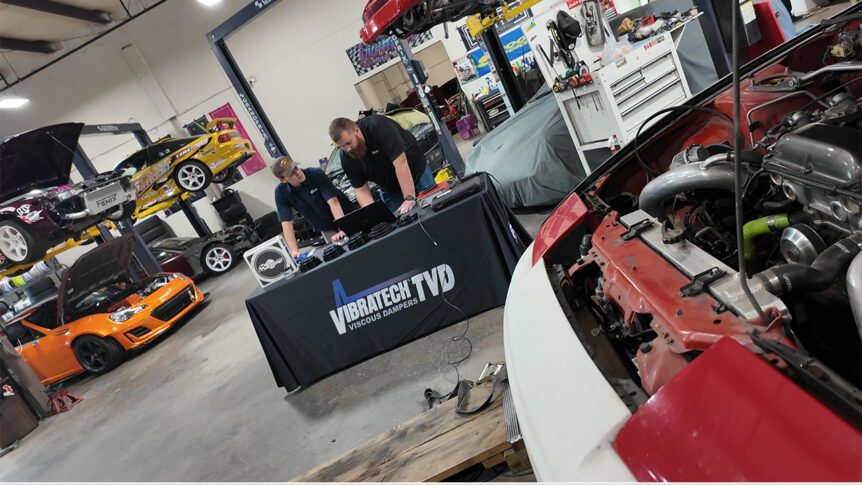When it comes to building reliable, high-performance engines, few components are as overlooked as the harmonic damper. Recently, our team joined forces with Jimmy Oakes Garage to test a prototype Fluidampr damper for the Nissan SR20 engine. The results reinforced why professional builders and racers continue to trust Fluidampr: consistent vibration control, measurable performance improvements, and durability that stock elastomer dampers can’t match.
Why Dampers Matter
During the session, Jimmy Oakes, owner of Jimmy Oakes Garage and well-known automotive content creator, put it simply, “People look at crank pulleys and go, ‘Okay, it bolts on, we’re good to go.’ But there’s a lot more that goes into it. The harmonics of the engine affect so much.”
A stock rubber pulley might be fine for stock output. But as soon as you increase performance the torsional vibrations inside the crankshaft rise. OEM dampers are designed to absorb a narrow range of torsional vibration at factory power levels. Push beyond that, and the damper can become overwhelmed. Sometimes literally coming apart.
The import racing community knows this safety problem well. As Oakes pointed out, “How many times have you seen a crank pulley separate on a 2JZ and just go spinning down the track? It happens.”
Fluidampr solves this with the inertia ring placed inside a sealed housing and suspended in a thin layer of silicone fluid. As the crankshaft twists and vibrates, the inertia ring shears through the fluid, absorbing a wide frequency range of torsional vibration. The benefit is smoother operation, reduced wear on critical engine parts, and more usable power delivered through the drivetrain.
“People look at crank pulleys and go, ‘Okay, it bolts on, we’re good to go.’ But there’s a lot more that goes into it. The harmonics of the engine affect so much.” – Jimmy Oakes. Jimmy Oakes Garage
Inside the Test Session
The prototype SR20 damper was tested against a worn, original stock elastomer damper. Using a dyno not to chase peak horsepower, but to measure harmonics, the team instrumented the crankshaft with sensors capable of capturing speed fluctuations between flywheel teeth down to hundredths of a second.
As Fluidampr’s engineering team explained, “What we’re actually looking at is speed fluctuations between teeth. The firing of the engine causes small but violent twists in the crankshaft. That twist is torsional harmonics and that’s what we’re damping.”
Three prototype dampers were brought in, each filled with silicone of different viscosities. By changing the viscosity, engineers can tune how quickly the inertia ring responds to crankshaft motion.

From Baseline to Breakthrough
The baseline test with the OEM damper showed the typical vibration spikes and inconsistencies across the RPM range. When the Fluidampr prototype was installed, the difference was clear:
- Vibration spikes were reduced
- The mid-range smoothed out dramatically
- Consistency improved from run to run.
Perhaps most exciting for enthusiasts was Oakes celebrating, “We just gained 15 horsepower and 17 foot-pounds of torque. Pretty cool, I’ll take it.” This wasn’t the damper “adding” power, but rather freeing horsepower that was previously lost to vibration. As the Fluidampr team explains, “We’re not adding power as much as we’re freeing it from being lost in vibration.”
That difference is critical for performance engines that live at high RPM or under heavy load. A damper that can hold the crankshaft stable not only prevents long-term damage, but also ensures every bit of combustion energy gets transmitted through the drivetrain instead of lost in crank twist.
“We’re not adding power as much as we’re freeing it from being lost in vibration.” – Fluidampr engineering team

Built with Precision, Made in the USA
Another standout moment came when Oakes installed the prototype. “My favorite thing about your guys’ product, you don’t have to machine fit it. It fits right on,” he says. That level of precision isn’t by accident. Every Fluidampr is manufactured in Springville, New York, and goes through multiple inspection points before it leaves the factory. Dealers and customers can trust that the same damper tested on camera meets the same standards as every production unit.
Oakes sums it up nicely after listening to the engineers explain the process, “All of your products go through intense inspections. So they’re not just assembled in the USA—they’re made in the USA.”
What This Means for the SR20 Community
For years, SR20 owners had to choose between reusing old stock dampers, limited aftermarket offerings, or fabricating one-off solutions. That’s about to change with Fluidampr’s new prototype moving toward production. “It’s cool that we’re helping make a product for the SR community. I’m stoked I get to be a part of this,” exclaims Oakes.
Based on the test results, the prototype damper smoothed out crankshaft harmonics, freed up measurable power, and offered the reliability Fluidampr is known for across motorsport and OEM applications. Once finalized, it will give SR20 builders the same proven protection trusted in everything from professional drift cars to endurance racing programs.
The Takeaway for Performance Shops & Customers
- Harmonic dampers are not optional. They are a core reliability and performance part of any build.
- Fluidampr’s viscous design outperforms stock rubber dampers, especially as power increases.
- Prototype SR20 testing showed reduced harmonics, smoother operation, and a measurable horsepower gain.
- Every unit is made and inspected in the USA to the same high standards Fluidampr is known for.
As the engineering team said after reviewing the results, “We lost a lot of the big spikes and overall brought everything down. And we did see a slight power increase. Instead of being lost to vibration, we’re actually transmitting it through the rest of the powertrain.”
That’s the kind of real-world result that translates into customer confidence, dealer sales, and long-lasting engine builds. Stay tuned, the SR20 damper is on its way.


